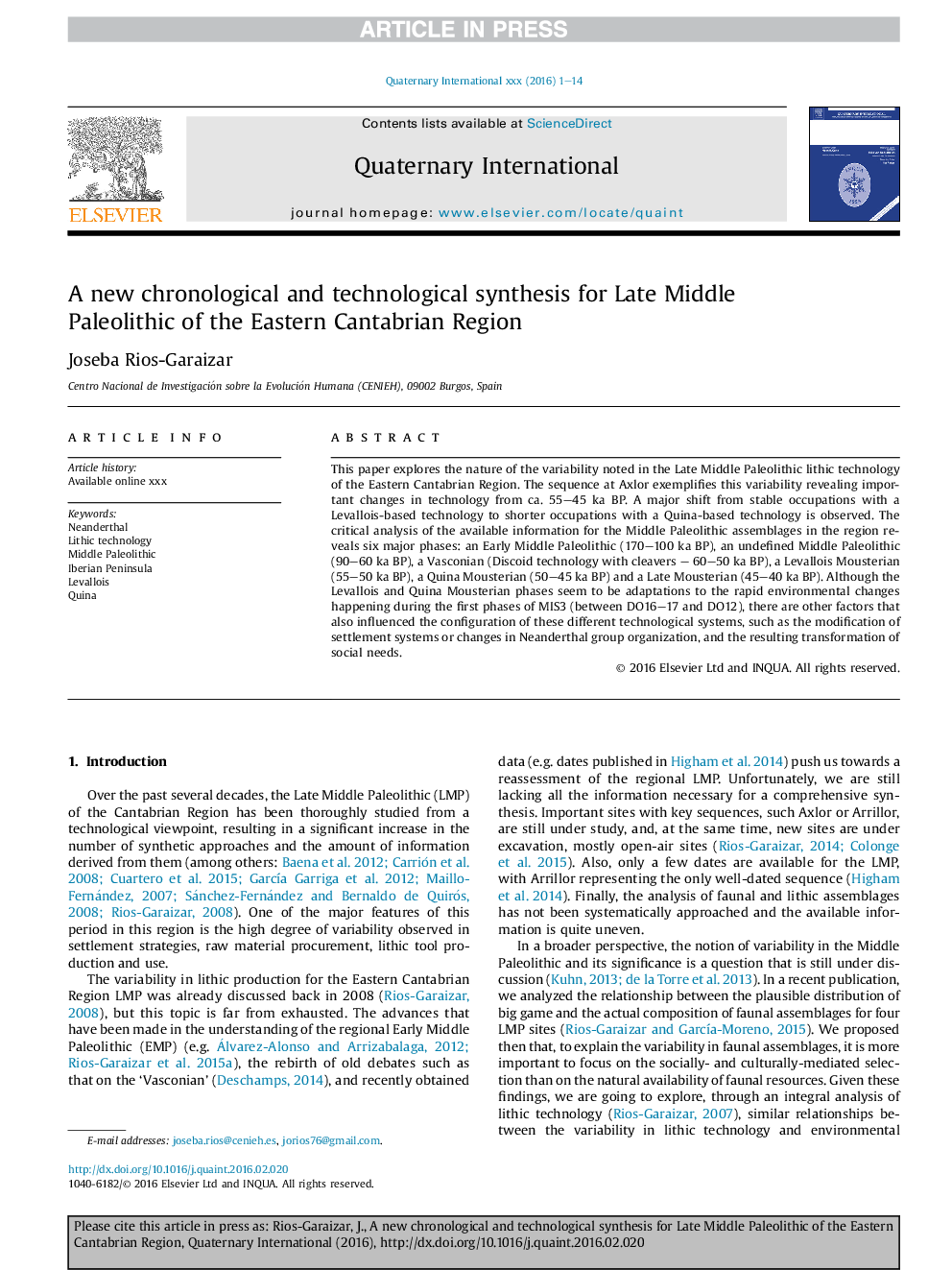| Article ID | Journal | Published Year | Pages | File Type |
|---|---|---|---|---|
| 5113568 | Quaternary International | 2017 | 14 Pages |
Abstract
This paper explores the nature of the variability noted in the Late Middle Paleolithic lithic technology of the Eastern Cantabrian Region. The sequence at Axlor exemplifies this variability revealing important changes in technology from ca. 55-45Â ka BP. A major shift from stable occupations with a Levallois-based technology to shorter occupations with a Quina-based technology is observed. The critical analysis of the available information for the Middle Paleolithic assemblages in the region reveals six major phases: an Early Middle Paleolithic (170-100Â ka BP), an undefined Middle Paleolithic (90-60Â ka BP), a Vasconian (Discoid technology with cleavers - 60-50Â ka BP), a Levallois Mousterian (55-50Â ka BP), a Quina Mousterian (50-45Â ka BP) and a Late Mousterian (45-40Â ka BP). Although the Levallois and Quina Mousterian phases seem to be adaptations to the rapid environmental changes happening during the first phases of MIS3 (between DO16-17 and DO12), there are other factors that also influenced the configuration of these different technological systems, such as the modification of settlement systems or changes in Neanderthal group organization, and the resulting transformation of social needs.
Related Topics
Physical Sciences and Engineering
Earth and Planetary Sciences
Geology
Authors
Joseba Rios-Garaizar,
